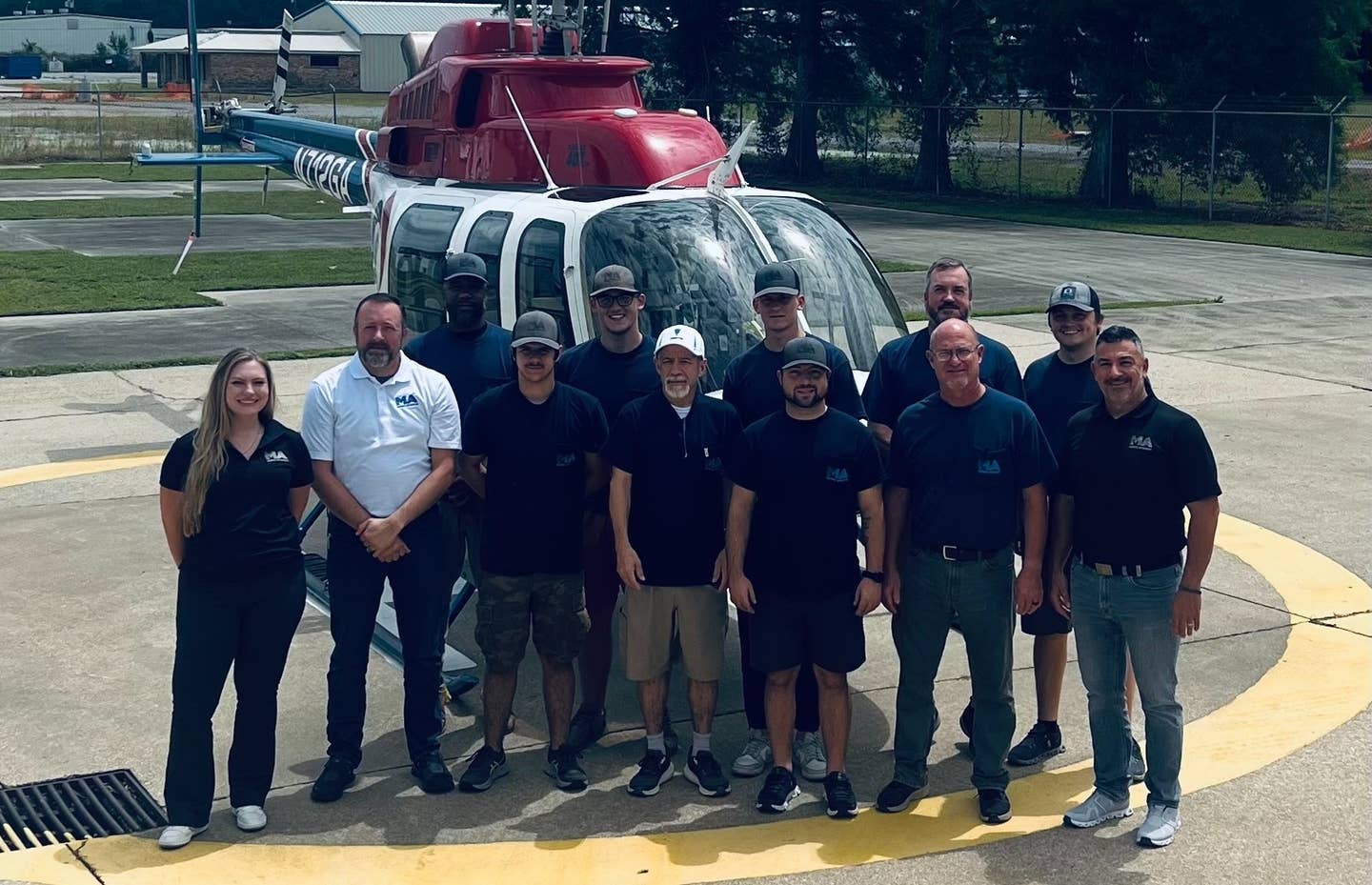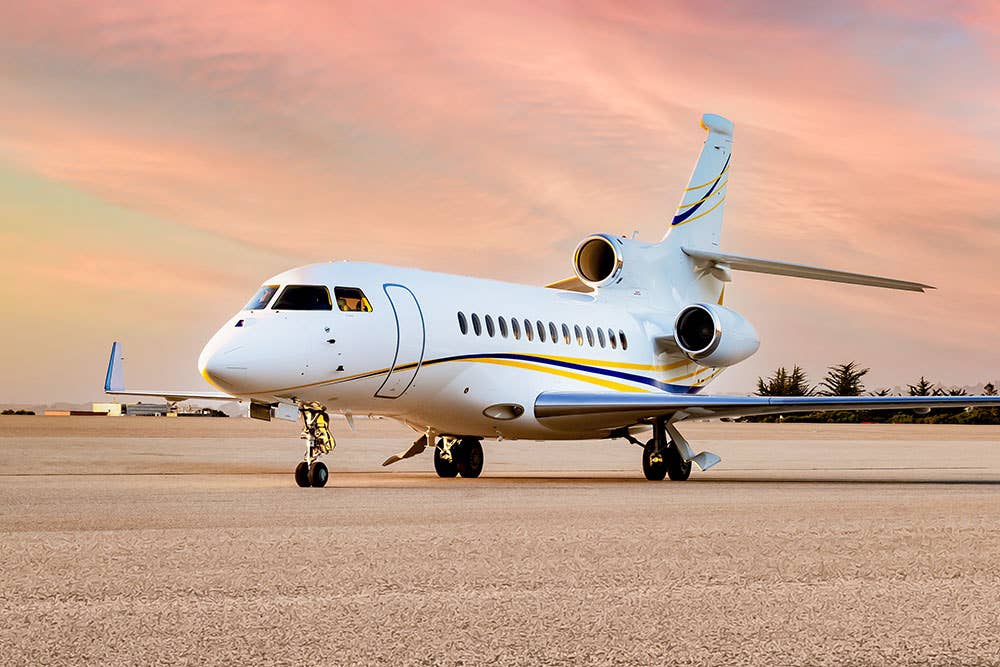
John and me in our Saudi dress in front of the Cessna 182. Courtesy Martha King
It was during EAA AirVenture at Oshkosh, Wisconsin. John and I were seated at a dinner table when a friend brought up a visitor. We were informed the visitor was a prince of Saudi Arabia—and what ensued is the kind of extraordinary conversation that can happen at Oshkosh. I am sorry to say that I did not do a very good job with the conversation; I had no idea what to say to a prince. I later learned he had been a fighter pilot, as well as an astronaut in a space shuttle mission. Had I known those things, I would have done a better job—I do have some idea of what to say to a fighter pilot and an astronaut. Our visitor was His Royal Highness Prince Sultan bin Salman, an ardent supporter of general aviation and son of the king.
Prince Sultan told us that in order to help promote general aviation, he was planning on inviting us to Saudi Arabia for an airshow. Months went by before we heard anything more. Then a few weeks before the show was scheduled, we received a fax from Saudi Arabia inviting us to the airshow and asking us to speak. Of course, I wondered how, as a female pilot, I would fare in Saudi Arabia. They asked me to send measurements for a coverall robe called an abaya; I took that as a clue that things would be different than I was used to.
The leg on Lufthansa from Frankfurt, Germany, to Saudi Arabia was interesting. As I followed the flight on ForeFlight, it became apparent we were setting up to fly around Syria and Iraq. That seemed like a very good idea to me.
After deplaning in Riyadh, it was immediately obvious this was a place you’d never confuse with Kansas. Most men were wearing the scarves and robes of traditional Saudi dress, and the female inspectors who worked in security had their faces entirely covered by veils, with only slits for their eyes.
At the airport, John and I met many of Prince Sultan’s aviation friends who were gathering from all over the world to support the airshow. Getting to know them was a great experience.
The Saudi Space Commission, which is chaired by Prince Sultan, was officially sponsoring the airshow. The Space Commission employees who served as our escorts and hosts—Hala, Rana and Fawaz—were extremely thoughtful and well-educated. Everyone we met had master’s degrees from either Europe or the United States. They went to great lengths to ensure that, as much as possible, we understood and appreciated the culture of Saudi Arabia.
They presented us with traditional Saudi dress. Both John and I decided to wear it as a sign of respect. It was expected (though not required) that, as a woman, I would wear a covering abaya, but it seemed to be very much a surprise, and very pleasing to folks, that John wore and even flew in his thobe.
On our first full day in the city, our escorts took us to the Saqr Al-Jazira Aviation Museum, followed by a great get-acquainted lunch. Next were stops at a souk (an old market) and the historic Al Masmak Fortress. The evening was topped off with a traditional Saudi dinner at the estate of Prince Sultan. Everyone we met was warm and hospitable.
The airshow was held at Thumamah Airport, located about 37 miles north of Riyadh with a 13,000-foot runway. The airport was recently designated a general aviation airport, and it’s operated by the Saudi Aviation Club. The club was established by Prince Sultan to encourage public participation in aviation, and is a member of the International Aircraft Owners and Pilots Association. The airshow included a very informative and motivating set of hangar talks given by the many aviation contacts Prince Sultan had nurtured over the years.
The women participating in the airshow were warmly welcomed. Adwa AlDakheel, the master of ceremonies for the event, was a woman who had learned to fly while attending college in Boston and continued her flying in Saudi Arabia as a member of the Saudi Aviation Club. Several of the Saudi women I met told me they felt it was a wonderful time to be a woman in Saudi Arabia because they are on the cusp of great change. Women had just received the right to drive about 18 months prior.
Read More from Martha King: Sky Kings
John and I gave a talk describing our 50-plus-year partnership to help provide access to aviation knowledge. Afterward, we were told by many people that the talk was inspirational. We didn’t really understand that at first—we were just telling our story. But the next day, a man told us that our talk was all his wife would talk about well into the evening. Then we got it. Women were seeking partnership, including in their flying. But from my conversations with Capt. Ayed Al Kasmi, the CEO of the Saudi Aviation Club, and Capt. Farres Moneer, the managing director, I learned that women in aviation have a long way to go in Saudi Arabia. Of the approximately 3,000 nonmilitary pilots, only about 50 (1.7 percent) are women. It appears there are only two female pilots flying commercially—one flies for a major airline and the other flies jets for a private individual.
The leadership of Prince Sultan serves as a wonderful catalyst for the improvement of general aviation’s prospects in Saudi Arabia, and the airshow, with its hangar talks, represented a greatly needed commitment. Unlike in the US, where aviation started with general aviation, in Saudi Arabia, aviation started with the military and airlines. People there aren’t used to individuals flying around in personal airplanes. It seems to many in the government that private flying is simply in the way. Government there, as in many countries, just doesn’t understand the productive role general aviation can play within the community and for the economy.
Another prince, His Royal Highness Prince Saud bin Khalid, a nephew of the king, has a Mooney that he and his wife, who is also a pilot, keep in the United States. He invited John and me to dinner one evening, along with about 20 high-level government people. Included was Abdulhadi Al-Mansouri, president of the General Authority of Civil Aviation, which is the equivalent of the administrator of the FAA in the US. He was seated next to John and across from the prince, so they could explain how important general aviation is. GACA can profoundly influence many of general aviation’s problems—including the high cost of fees and the complexity of regulations.
Other issues—such as the lack of skilled resources and repair stations, as well as limited availability of avgas, GA airports and FBOs—will take more time to solve. It is a lot to hope for that general aviation in Saudi Arabia will progress quickly, but because of the many very influential pilots we met who care so deeply, there is hope. It is fun to see these passionate aviators in action, and we certainly wish them the best.
This story appeared in the May 2020 issue of Flying Magazine

Subscribe to Our Newsletter
Get the latest FLYING stories delivered directly to your inbox






